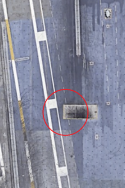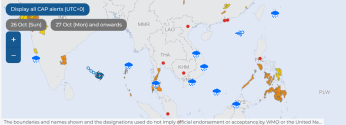Some are the former in service ships, I got the news that the video on October 7 showed one of the two 055 ships heading south, while other ships that were not in service were assembled later.Holy, the entire 9th destroyer flotilla is out
You are using an out of date browser. It may not display this or other websites correctly.
You should upgrade or use an alternative browser.
You should upgrade or use an alternative browser.
CV-18 Fujian/003 CATOBAR carrier thread
- Thread starter Jeff Head
- Start date
Shandong left port very briefly, of which I would guess is related to the commissioning.
No, 9th destroyer flotilla should have 11 destroyers and 7 frigates.The photos appear only Less than a quarter.Holy, the entire ninth destroyer flotilla is out
(According to someone:4 ships 055(105 Dalian, 106 Yan 'an, 107 Zunyi, 108 Xianyang), 2 ships 052C(170 Lanzhou, 171 Haikou), 4 ships 052D(172 Kunming, 173 Changsha, 174 Hefei, 175 Yinchuan), 5 ships 054A(500 Xianning, 572 Hengshui, 550)and 052D 176 Loudi,which will service sooner.)
If it ranks in the world, its strength may be able to compete with JMSDF for the fifth place.
Last edited:
lcloo
Major
The Fujian can only operate at just about 60% of the rate of the Ford because the aircrafts landing on the debt rolls over one of the catapults. The angled deck of the Fujian is less than American carriers like the Nimitz or the Ford class.
As it has been written by many people in the past, the USN, Marine Nationale, and PLA Navy practice cyclical operations, so it doesn't matter that the landing strip overlaps with one of the catapult launch positions, because simultaneous launch and recovery are not done as part of normal practice to begin with.
There are so many active and former USN naval aviators who have said this over the years that I am astounded that CNN managed to find retired officers who made such a cliched remark.
The point of cyclical operations is that for a launch cycle you have the flight deck laid out to launch a set number of aircraft (including bow and waist catapults -- which of course overlaps the landing strip), and then for a recovery cycle you clear the landing strip and recover and spot the previous cycle of aircraft which were launched. Rinse and repeat.
Of course, CV-18 would have a lower sortie rate than say, Ford, by virtue of being a smaller ship and having one fewer catapult, one fewer elevator, and other design features that a CVN gets to benefit from versus a CV (smaller island, island positioning etc) -- but one catapult launch position overlapping with the landing strip is not really a major factor.
As it has been written by many people in the past, the USN, Marine Nationale, and PLA Navy practice cyclical operations, so it doesn't matter that the landing strip overlaps with one of the catapult launch positions, because simultaneous launch and recovery are not done as part of normal practice to begin with.
There are so many active and former USN naval aviators who have said this over the years that I am astounded that CNN managed to find retired officers who made such a cliched remark.
The trick here was that they didn't say simultaneous launch and recovery is a major cause of the "60%", or even necessarily related to it at all. They said:
After examining the photographs of the Fujian’s flight deck, Schuster and retired Lt. Cmdr. Keith Stewart, a former US naval aviator, noted that the Fujian’s deck layout limits simultaneous takeoffs and landings.
Which is technically true.
Though, there's also this part:
Schuster said the angle at which the landing area crosses the Fujian’s deck is only 6 degrees off center, compared with 9 degrees on the US carriers, limiting space between the landing strip and the forward two catapults.
Additionally, the Fujian’s landing area is longer than that of the Nimitz, meaning it extends too close to the bow area where aircraft are positioned for catapult-assisted launching, he said.
The “longer landing area and the narrower deck angle reduces the space for repositioning the recovered aircraft,” Schuster said.
The US officers also noted that the forward catapults seem to be longer on the Fujian than the Nimitz.
Essentially, aircraft would be at risk of flight deck collisions as they move to and from elevators to the hangar deck below for takeoffs and landings, Schuster and Stewart said.
The only option is to reduce the pace of flight deck operations to try to prevent flight deck mishaps, they said.
Also fyi, for anyone unaware, the Nimitz class ships had their JBD interfering with the safety line of the landing zone, meaning they also couldn't conduct simultaneous launch and recovery. This wasn't changed until the Reagan subclass.



